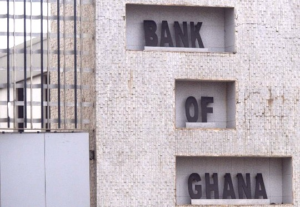Even as Ghana faces up to the prospect of a sharp drop in economic growth this year due to the impact of the global coronavirus pandemic – the Bank of Ghana projects the economic growth to fall to somewhere between 5.0 percent and 2.5 percent for 2020 – the latest data released by the central bank suggests that the country ‘s external accounts position is strong enough to ride out the coming economic slowdown.
As at the end of February, Ghana had gross international reserves (GIR) of US$10,036.8 billion, the highest in its history. This is enough to cover 4.8 months of imports, more than one and a half times the 3.0 months target.
A significant chunk of this record high GIR obtained from Ghana’s successful issuance of US$3 billion in Eurobonds in February of which more than half was earmarked for refinancing of existing public debt. Government has not yet revealed to what extent the coronavirus outbreak will change these plans, but it is likely that it will reduce the proportion allocated to debt refinancing in order to increase the amount left to serve as a buffer during this period of coronavirus induced economic uncertainty.
Ghana’s strong external position reflects in the stability of the cedi against the US dollar during the first quarter of this year – indeed the cedi has actually appreciated marginally in response to the significant fall in imports from China, where the virus originated from.
Indeed, the first two months of 2020 saw Ghana’s ongoing, nearly four year-long, trade surplus expand further, to US$780.0 million, more than twice the US$378.2 million surplus achieved during the first two months of 2019. Last year, Ghana made a trade surplus for the full year of US$2,282.3 million and the trade sector performance at the start of 2020, propelled by improved export proceeds from both cocoa and gold, and a fall in the value of both oil and non-oil imports, had given hope for a record high merchandise trade surplus this year. However, the arrival of the coronavirus has dramatically changed international trade flows and indeed is still doing so, creating complete uncertainty as to how the rest of this year will play out.

For 2019, Ghana recorded another current account deficit, but at US$1,833.7 million, translating to 2.8 percent of GDP, this deficit continues to narrow by the year. Crucially, it was completely covered during 2019 by a US$3,119.5 million capital and financial account surplus (this translating to 4.7 percent of GDP).
Consequently, Ghana ended 2019 with an overall balance of payments surplus of US$1,341.0 million (2.0 percent of GDP), further strengthening its GIR before the latest Eurobond issuance boosted them to a record high in February this year.
Ghana’s net international reserves – GIR less commitments – was also at a high of US$6,855.5 million as at February this year, more than twice the US$3,173.3 million the country had by February 2019.
All this means that Ghana is well placed to withstand a sharp fall in export revenues if it happens. So far, the coronavirus outbreak has contributed to a sharp fall in global market crude oil prices to a three-decade low, but conversely, gold prices have reached a seven year high, this year. Ghana is also benefitting from higher cocoa prices, brought about by the US$400 a ton living income differential, introduced from the 2020/21 crop season but already being enjoyed by Ghana which sells its premium quality cocoa on the forward market.
Reduced international trade – especially with China, one of Ghana’s biggest bilateral trading partners – is also benefitting Ghana’s trade balance and consequently, the cedi’s exchange rate.
With the current situation, there is little likelihood of significant cedi depreciation, which is one less thing Ghanaians will have to worry about.











